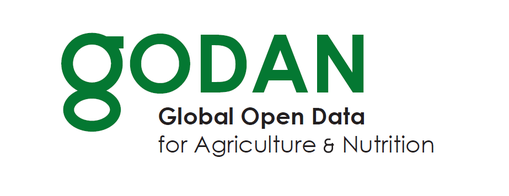Mutio and I stand at the edge of what is supposed to be a vegetable farm.
The bare earth is baked to a nice, dark brown shade. Cracks appear here and there as tiny lines mark the path along which rain waters had passed. At the edge of the farm lies what was supposed to be his crop, washed away by rain waters.
The middle-aged man looks into my eyes with rheumy ones, for a minute. I break the contact and stare at the blue sky. An eagle flies past us. A yellow sun blinds me. He taps my shoulder and declares:
“I wish someone warned us. I wish we knew it would rain this heavily”.

I started wondering, what if Mutio and his contemporaries had a way of knowing about the rain beforehand? What if they knew how heavy these rains would be? What would they have done differently?
As I was pondering on these questions, I took out my phone and started reading. I kept on reading as he continued assessing the damage. Along the way, I stumbled upon a story on how Big Data could help farmers overcome challenges such as this one, so I read on.
What is Big Data?
This was the first question that I had in mind, and the article I was reading answered it quite clearly. It says that this is an extremely vast amount of data that can be analyzed by a computer to reveal associations, patterns and trends. This to me meant that if one were in possession of such data, they are in a better position to tmake decisions. However, this still did not offer a solution to Mutio, so I scrolled downwards.
What can Big Data do for Mutio?
Weather prediction is not an exact science. I have personally lost count of the number of times I leave my place with an umbrella expecting rains only to be struck by the sun throughout the day. Despite their best efforts, the metrological department sometimes just misses the mark and make wrong predictions. Big Data, however, presents a new chapter in this area and can help farmers such as Mutio better prepare for impending extremes of weather.

There are Big Data systems such as IBM’s Deep Thunder that present farmers with valuable insights into things such as the amount of rain that will fall in a specific area rather than a whole geographical area as is the case with most weather data.
In addition to this, it also presents him with information on areas that are most likely to flood and from this he can deduce conclusions such as the optimal time to plant. In this way he can better manage his farming practices and avoid situations such as the one we are staring at now.
Is that all there is to it?
The more I read, the more I discovered how useful Big Data can be to farmers. Other than weather prediction, there are other things such as prevailing soil moisture conditions. Combined with the crop type and weather information, it can be used as a guide for irrigation control. That is not all.
I also learnt that with data on the nutrient content in the soil, one can assess any deficiencies and act accordingly. Rather than making blanket fertilizer applications, a farmer can make use of the data for precise, point wise applications.
However, there’s a catch.

What are the Challenges with Big Data?
There are several barriers that smallholder farmers such as him need to overcome in order to make use of such technologies. One of these is access to this data. Many institutions and private firms protect or sell their data and hence such farmers cannot take advantage of them. However, organizations such as GODAN are working to break this barrier.
The data is also not going to collect itself.
There are capital investments that need to be made not only for weather data collection but also soil and water sensors. This is not exactly a cheap affair and a farmer of Mutio’s capacity would be unable to afford it. For farmers to take full advantage of the benefits brought about by Big Data, these barriers have to be overcome.
Just as I’m about to switch off the phone, I see a link hinting at: “The Internet of Things”.
Stay tuned, I’ll tell you about that next week.

10 thoughts on “Mutio’s Farm and the Big Data”